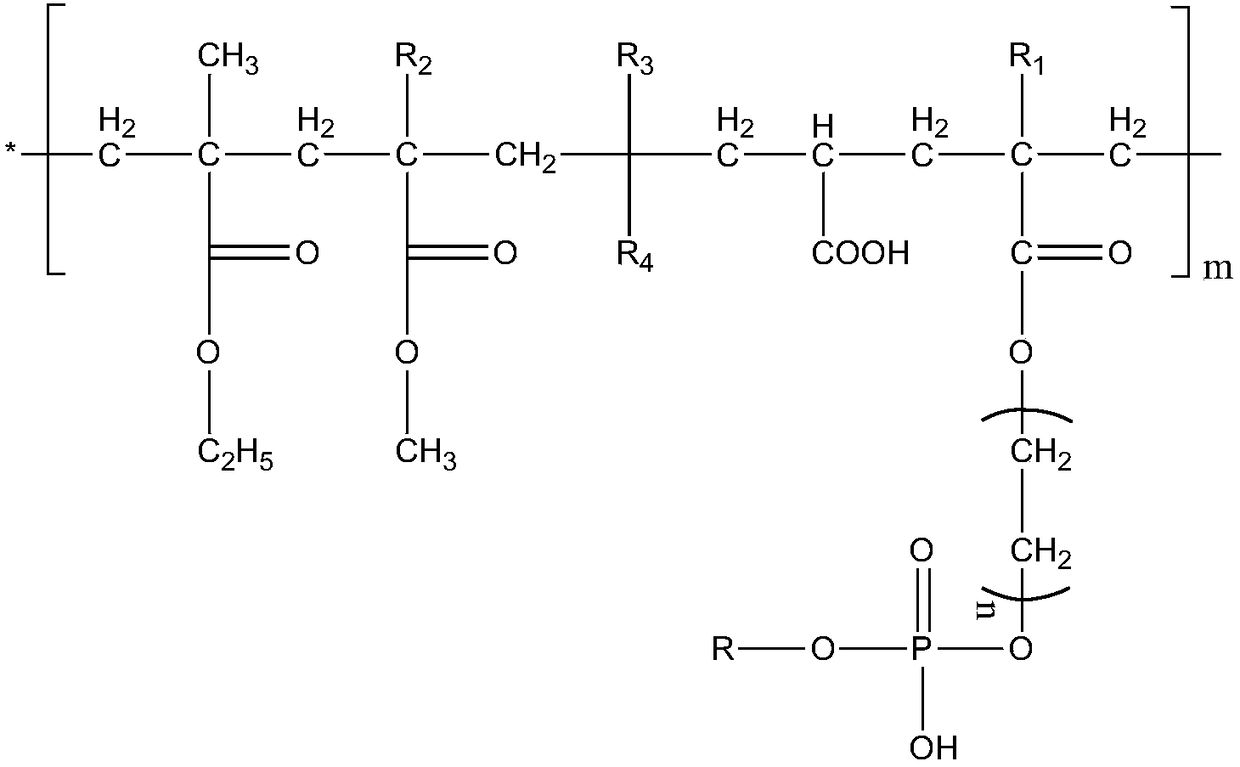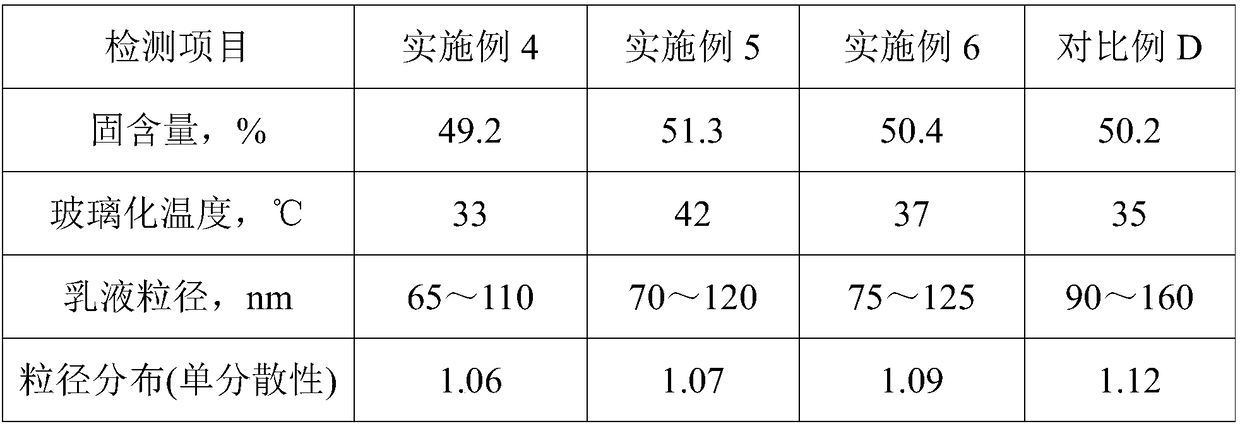Phosphate modified acrylic core-shell emulsion with salt spray resistance
A technology of acrylic core and core-shell emulsion, which is applied in the fields of compounds, coatings, and organic chemistry of Group 5/15 elements of the periodic table, and can solve problems such as affecting film-forming performance, increasing application costs, and low alkyl carbon number. , to achieve the effect of excellent adhesion
- Summary
- Abstract
- Description
- Claims
- Application Information
AI Technical Summary
Problems solved by technology
Method used
Image
Examples
Embodiment 1
[0038] A kind of octyl-hydroxyethyl acrylate phosphodiester A, its preparation process is as follows:
[0039] In the reaction kettle, add 35.0 parts of hydroxyethyl acrylate and 0.2 parts of hydroquinone, stir evenly, raise the temperature to 50°C, add 28.0 parts of phosphorus pentoxide and 36.8 parts of octanol in batches, and complete the addition within 1.5 hours , and then raise the temperature to 82° C., keep the temperature for 3 hours, measure the acid value, cool down after passing the test, and discharge to obtain the octyl-hydroxyethyl acrylate phosphate diester A.
Embodiment 2
[0041] A kind of hexyl-hydroxyethyl methacrylate phosphodiester B, its preparation process is as follows:
[0042] In the reaction kettle, add 40.0 parts of hydroxyethyl methacrylate and 0.2 parts of hydroquinone, stir evenly, raise the temperature to 50°C, add 26.0 parts of phosphorus pentoxide and 33.8 parts of hexanol in batches, within 1.5h After the addition, the temperature was raised to 82°C, and the temperature was maintained for 3 hours to measure the acid value. After passing the test, the temperature was lowered, and the material was discharged to obtain the hexyl-hydroxyethyl methacrylate phosphodiester B.
Embodiment 3
[0044] A kind of octyl-acrylate hydroxypropyl phosphate diester C, its preparation process is as follows:
[0045] In the reaction kettle, add 38.0 parts of hydroxypropyl acrylate and 0.2 parts of hydroquinone, stir evenly, raise the temperature to 50°C, add 30.0 parts of phosphorus pentoxide and 31.8 parts of octanol in batches, and complete the addition within 1.5 hours , and then raise the temperature to 82°C, keep the temperature for 3 hours, measure the acid value, cool down after passing the test, and discharge to obtain the octyl-hydroxypropyl acrylate phosphate diester C.
PUM
| Property | Measurement | Unit |
|---|---|---|
| particle diameter | aaaaa | aaaaa |
| glass transition temperature | aaaaa | aaaaa |
| particle diameter | aaaaa | aaaaa |
Abstract
Description
Claims
Application Information
 Login to View More
Login to View More - R&D
- Intellectual Property
- Life Sciences
- Materials
- Tech Scout
- Unparalleled Data Quality
- Higher Quality Content
- 60% Fewer Hallucinations
Browse by: Latest US Patents, China's latest patents, Technical Efficacy Thesaurus, Application Domain, Technology Topic, Popular Technical Reports.
© 2025 PatSnap. All rights reserved.Legal|Privacy policy|Modern Slavery Act Transparency Statement|Sitemap|About US| Contact US: help@patsnap.com



